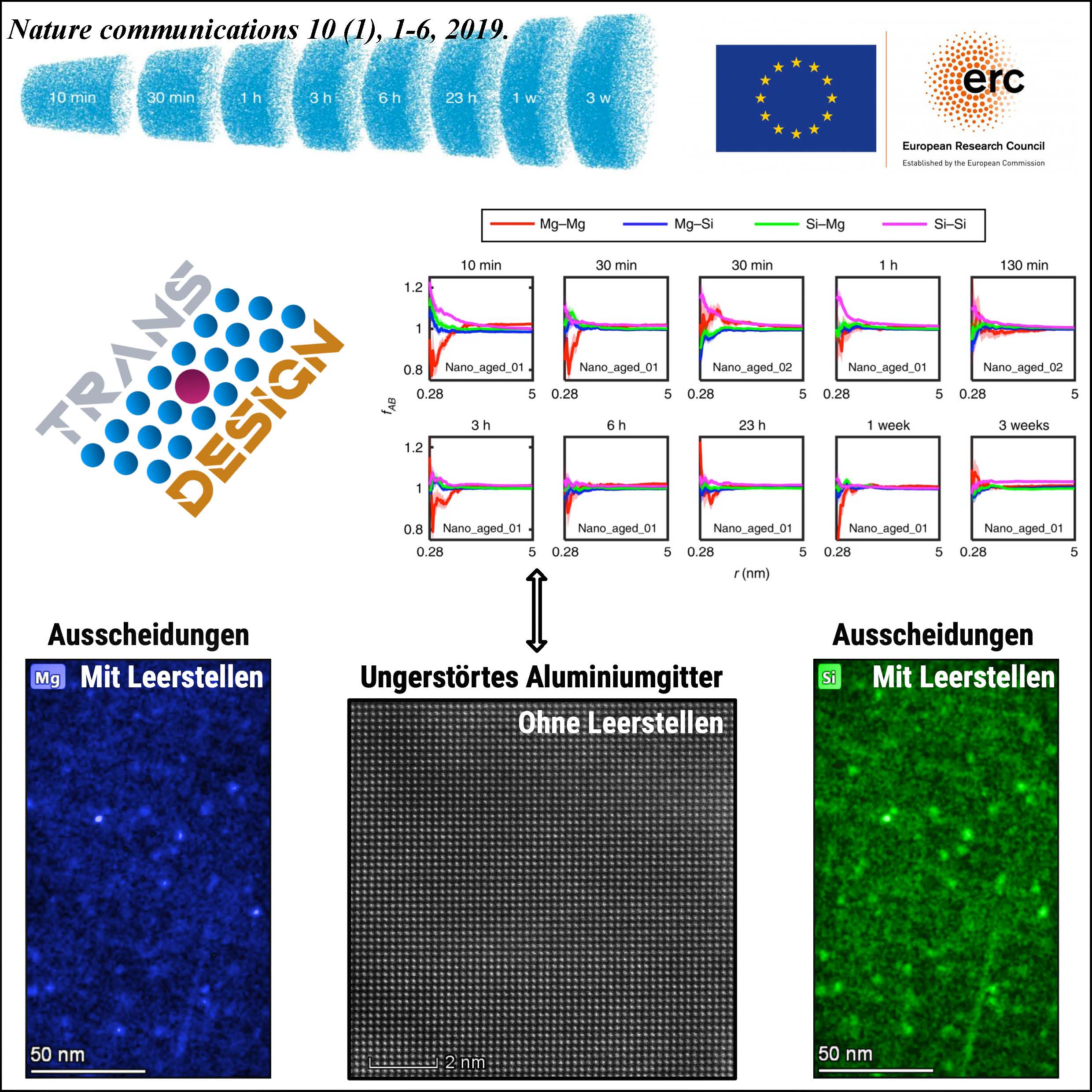NEM
ERC Starting Grant “TRANSDESIGN”
Projektbetreuer:
Stefan Pogatscher
Phillip Dumitraschkewitz
Thomas Kremmer
Cameron Quick
Diego Coradini
Willenshofer Patrick
Veronika Grela
Anna Stachel
Bogdan Malysh
Innozenz Steffny

The first technological use of non-equilibrium phase transitions in metals for designing properties of materials is documented as ~800 BC, but the time has come to make a leap forward. Nearly all classes of materials show non-equilibrium phase transitions. Understanding how fast these transitions occur is a key question in materials science. In metals, kinetics is connected to diffusion via atomic lattice vacancies.
However, there is no universal sound and predictive physical understanding of the kinetics under non-equilibrium situations so far, because theory cannot be verified experimentally. The in situ measuring of non-equilibrium kinetics and the corresponding vacancy evolution is not possible at industrially relevant and controlled high thermal rates of nowadays. Moreover, direct atomistic observation of vacancies in bulk metals has not been achieved in the past.
The development of unique strategies for in situ measuring of non-equilibrium phase transition kinetics and the microscopic observation of the underlying processes are the main objectives of TRANSDESIGN. Unveiling kinetic evolution of non-equilibrium vacancies and their atomic lattice motion in metals are seen as breakthroughs. Hence, we observe non-equilibrium vacancy annihilation via ultrafast chip calorimetry, which offers unique advantages to understand non-equilibrium diffusion.
Moreover, we aim to establish ultrafast in situ measurements of non-equilibrium phase transitions via chip calorimetry as a standard in thermal analysis for metallic systems of technological/economic relevance or with high potential. Within TRANSDESIGN we further utilize high image contrast solutes, which trap vacancies, as markers for an identification of the role of vacancies via scanning transmission electron microscopy. This unique strategy should enable the observation of “vacancies-at-work” in the bulk of metals.
The project aims to close longstanding experimental-theoretical gaps with significant impact on the optimization and design of new kinetically driven processes and products in the field of metallurgy. Bridging chip calorimetry and atomic characterisation experiments with thermo-kinetic and atomistic simulations are used to validate existing theoretical models and to create new universal guidelines to understand and to design phase transition kinetics in non-equilibrium metallic systems. However, the fundamentals gained within TRANSDESIGN are intended to be universal to significantly contribute to the advancement of the European competence in materials science.
In situ Transmission Electron Microscopy (TEM) (Diego Santa Rosa Coradini, MSc.)
Radiation resistant Al alloys for space applications (Dipl.-Ing. Patrick Willenshofer)



